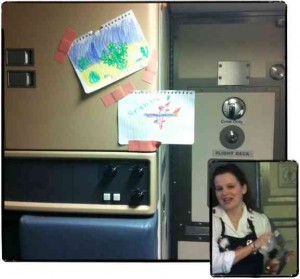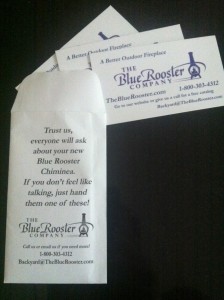This is a guest post from Jay Baer — social media and content strategist and author of “Youtility: Why Smart Marketing is About Help not Hype.” You can also catch Jay speaking about “Youtility” at SocialMedia.org’s upcoming Brands-Only Summit this October. See the original post this is adapted from and more like it on his Convince & Convert blog.
The single most important element of your social media program is making your company worthy of discussion.
We don’t tweet meh. We don’t upload blah to Facebook.
We use social media to express feelings that are at the opposing poles of fascination and frustration. So why do so many companies toe the line of average, yet expect customers to shout from the digital rooftops about amazingly mediocre products and services?
If you’re going to use social media to accomplish anything of value, you must have a talk trigger that rousts your advocates from their naturally drowsy state, and gets them typing concise messages of adoration. But the paradox is that talk triggers for social media most often occur offline, not online. The great meal, the over-the-top customer service, the killer swimsuit, the uber-friendly accountant… all of them manifest in the real world, not the virtual one.
We use digital to communicate analog. In fact, Keller Fay Group estimates that 91 percent of word of mouth about companies occurs offline, meaning that we only use social media to discuss things that REALLY make us want to shout or cry, not the mundane victories and defeats we experience with brands every day.
How do you build a talk trigger for your company? There are two options.
1. Spontaneous talk triggers
 The talk triggers that create the most intense advocacy behaviors are those that occur in the wild. The moment-in-time occurrences where a brand exceeds your (typically low) expectations in a dramatic way, causing recipients and observers to grab the closest smart phone and post the “you will NOT believe what just happened” messages that put a smile on your face and make you rethink (perhaps subconsciously) the values and merit of the company in question.
The talk triggers that create the most intense advocacy behaviors are those that occur in the wild. The moment-in-time occurrences where a brand exceeds your (typically low) expectations in a dramatic way, causing recipients and observers to grab the closest smart phone and post the “you will NOT believe what just happened” messages that put a smile on your face and make you rethink (perhaps subconsciously) the values and merit of the company in question.
This happened to me a few months ago when a Southwest Airlines flight attendant made a young boy’s day by taping his crayon drawings to the front of the plane, and congratulating him publicly. It was one of the warmest, most genuine things I’d ever seen. I live blogged it (viva in-flight Wi-Fi), and it became a popular post here at Convince & Convert.
Southwest subsequently wrote about my post on their blog and also mentioned it in the in-flight magazine months later. The flight attendant was congratulated in the employee podcast, too. The spontaneous talk trigger was the actions of the flight attendant, and it created a lot of chatter and advocacy.
What creates this type of trigger isn’t a plan or a spreadsheet, but rather corporate culture. A culture that values BEING social over DOING social. A culture where employees are empowered to work outside the script. I’ll bet if you did a social chatter analysis of spontaneous talk triggers and mapped them against level of detail of corporate social media policies and other guidelines, you’d find that “open” cultures yield more in-the-moment triggers. (Maybe I’ll write an eBook about that).
2. Planned talk triggers
 The other way to create socially-fueled advocacy is with planned talk triggers. In this case, the brand is using one or more points of disproportionate awesomeness in a premeditated way to encourage digital statements of support. The planned talk trigger is of course more reliable, and can be measured, tested, and optimized. The one thing it cannot be is untrue. If a brand embraces a planned trigger and “nudges” customers to create spread, that trigger better be terrific.
The other way to create socially-fueled advocacy is with planned talk triggers. In this case, the brand is using one or more points of disproportionate awesomeness in a premeditated way to encourage digital statements of support. The planned talk trigger is of course more reliable, and can be measured, tested, and optimized. The one thing it cannot be is untrue. If a brand embraces a planned trigger and “nudges” customers to create spread, that trigger better be terrific.
I encountered a fantastic, planned talk trigger recently from an outdoor fireplace company called Blue Rooster.
To warm the cool-but-still-pleasant nights spent on the patio of Convince & Convert global HQ in Bloomington, Indiana, the missus and I decided to purchase a chiminea. We settled on Blue Rooster based on reviews, size, and style. It showed up on time, was higher quality than anticipated, easier to assemble than feared, and worked better than hoped.
 But the best part was the talk trigger. In the parts bag of every Blue Rooster fireplace (I presume) is this marvelous, tiny envelope with three of the company’s business cards inside. The envelope reads:
But the best part was the talk trigger. In the parts bag of every Blue Rooster fireplace (I presume) is this marvelous, tiny envelope with three of the company’s business cards inside. The envelope reads:
“Trust us, everyone will ask about your new Blue Rooster Chiminea. If you don’t feel like talking, just hand them one of these! Call or email us if you need more.”
Indeed, several of my friends have asked about it, and now that I’ve written about it here, I can give out the cards.
It’s awfully hard to be great online if you’re less than great offline. What’s your talk trigger?
(For more of this kind of case study, check out my Social Pros podcast — with written transcripts each week.)
About Jay Baer
Jay Baer helps businesspeople fundamentally rethink their approach to marketing, resulting in soaring attention, increased sales, and newfound customer loyalty and advocacy. He is a hype-free social media and content strategist and speaker, and author of "Youtility: Why Smart Marketing is About Help not Hype." Jay is the founder of Convince & Convert and host of the Social Pros podcast.
- Web |
- More Posts(12)


